
Original Link: https://www.anandtech.com/show/2154
CES 2007: Motherboards and Memory
by Gary Key on January 17, 2007 12:15 AM EST- Posted in
- Trade Shows
As we mentioned in our previous Consumer Electronics Show 2007 article, the majority of products on display were evolutionary rather revolutionary. This pattern combined with the continuing emphasis on digital convergence left us with very few new product releases for the personal computer market.
We expect this to change in Q2 as AMD releases their new Barcelona processor series, additional chipsets, and the R600 family of graphic processors should be widely available. Intel is planning on new platforms based around the upcoming Bearlake series of chipsets in late Q2 with derivatives in Q3. We possibly could see the new Intel 45nm Penryn processor series by the end of the year based upon early test results.
In the consumer network market we very could see the final ratification of the 802.11N standard late this year. This is due in part to the current second draft specifications looking acceptable for all parties concerned at this time with the general plan being certified product that is upgradeable to the final specification will ship in late Q2.
The storage market will continue to see drive capacity increases with the first terabyte size drives shipping in early Q2. Solid State Disks will also make inroads into the portable market throughout the year. We expect to see a rapid acceptance of the SSD products during 2008 in both the portable and corporate desktop markets as the prices continue to fall while performance and drive capacities increase.
MSI: AMD 690G makes a debut
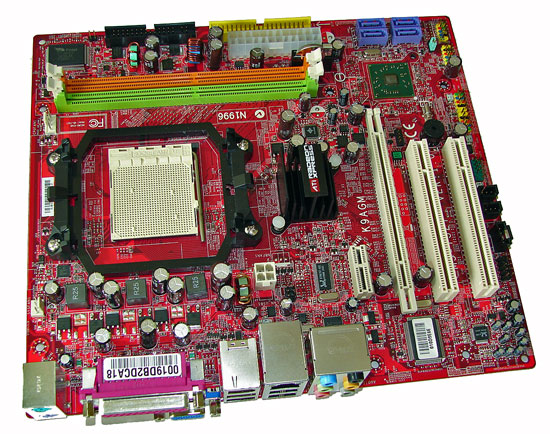
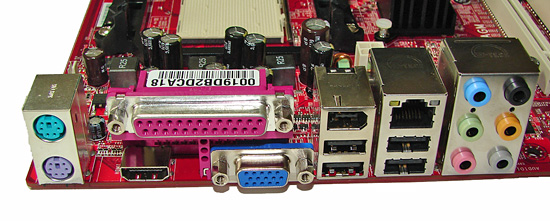
After attending a short presentation by AMD on the benefits of their upcoming 690G chipset that features Radeon X1250 graphics capability, we stopped by the MSI booth to view an early board built on this chipset. The initial performance numbers show the 690G easily outperforming the Intel G965 X3000 graphics core, and with some additional driver tuning it should offer a very competitive platform choice when compared to the NVIDIA 6150 boards, along with providing additional features.
The board we viewed was an early design release from MSI and will be marketed at the K9AGM2-FHI. It is a mATX design that features the AMD 690G Northbridge, AMD SB600 Southbridge, Realtek 8111B Gigabit Ethernet, Realtek ALC888 HD audio codec, and IEEE 1394 support from the VIA VT6308P chipset. The 690G chipset features native HDMI output via the integrated transmitter and HDCP support.
Based upon our early viewing of the X1250 graphics capability we have to say that AMD has an excellent solution for the HTPC crowd. The gaming performance was acceptable at 1280x1024 resolutions in both the Half Life 2 and Prey demos while providing more than enough capability for running most RTS and simulation type games. We will have a preview of this board and others in the coming weeks as AMD has informed us the official launch date is 02/28/07.
Gigabyte: NVIDIA 680i and 650i coming soon
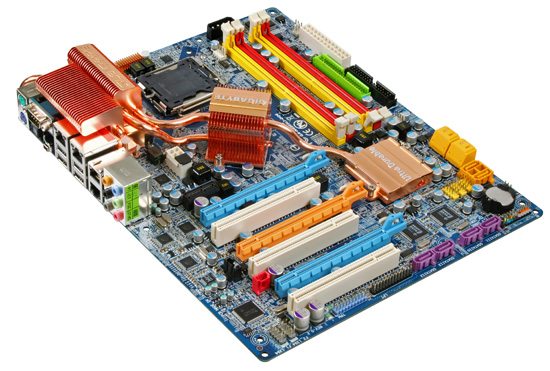
Gigabyte officially announced their GA-N680SLI-DQ6 motherboard that features the NVIDIA 680i chipset with full support for the latest Intel processors and the upcoming 1333FSB units. One of the unusual options on this board is four Gigabit LAN connections that fully support NVIDIA Dual-Net, TCP/IP acceleration, and FirstPacket technologies. The controllers also support the Teaming functionality that enables two sets of 2GB connections to act as a single connection potentially making this board a good choice for a home gateway or game server. The board also features Gigabyte's Quad-Triple Phase system for enhanced power delivery to the CPU. The board includes four e-SATA ports along with Gigabyte's dual BIOS technology. Available is expected shortly, and while pricing has not been set we expect it to be sell in the $250~$300 range.
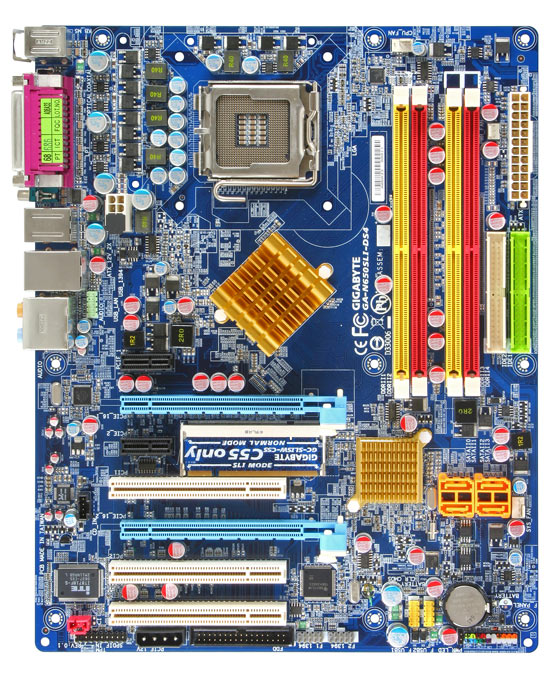
Also due for release shortly is the GA-N650SLI-DS4 motherboard based upon the NVIDIA 650i chipset. This board is designed to compete with the lower end P965 motherboards and features an all solid capacitor design, Gigabit Ethernet, and Realtek HD audio for a price of around $125 or lower.
Memory: Top Speed Wars while DDR2-800 prevails
With the release of DDR3 capable chipsets in late Q3 or possibly Q4 and minimal market penetration until 2009 we fully expect DDR2 to continue as the dominant system memory type for some time. It should to continue to ramp up in speeds while latencies will continue to be improved in the DDR2-800 range. DDR2-800 will likely become the base memory speed this year and for all intents and purposes this speed combined with low latencies offers the best combination of price and performance for the current processor lineups.
However, the bigger news in memory over the coming quarters will be the release of 2GB modules with low latencies. This will benefit those users switching over to Vista as the operating system recommends (and almost requires) additional memory relative to XP. Recommendations for a general user that does a variety of tasks from video editing to gaming will be 2GB, and enthusiasts or heavy gamer will need 4GB in our opinion. The switch to a 64-bit OS and applications will also increase memory requirements, and hopefully this year we will see Windows x64 platforms mature to the point where users can switch without any concerns about driver maturity or other issues.
DDR2 memory isn't the only big topic for memory manufacturers. We continue to see flash memory products increase in both size and speeds as the MLC and SLC technologies continue to mature. Just about everyone has a full lineup of flash products now with packaging, price, or Vista ReadyBoost capability differentiating the supplier's offerings. Let's take a look at some of the memory offerings we saw at the show.
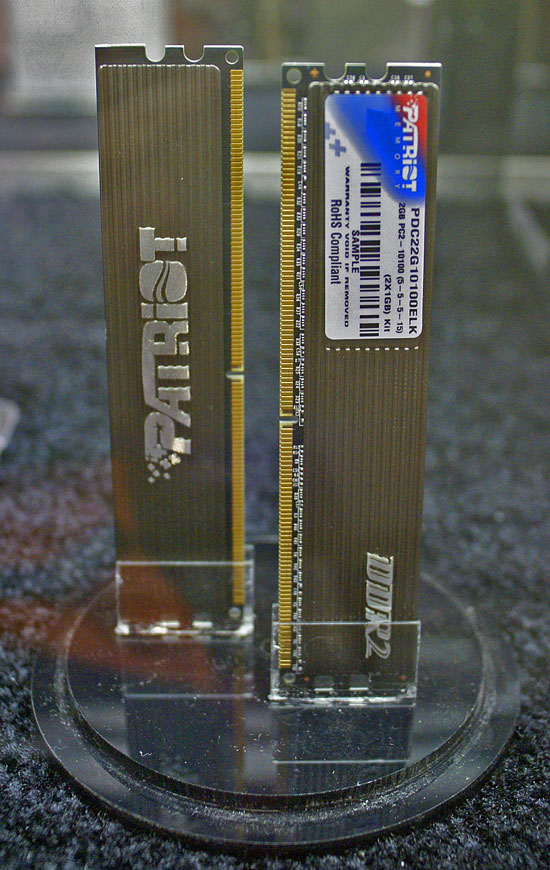
Our first stop was at Patriot Memory where they were showing off their new PC2-10100 memory that was released right after Corsair announced their PC2-10000. We continue to see the varying memory suppliers competing for the top speed title, but users need to understand these speeds are officially available only on the NVIDIA 680i boards. In our testing we have found the RD600 chipset to offer the same extended memory speeds as the 680i boards. We still believe DDR2-800 memory speeds with low latency timings provide nearly the same or better application performance than the higher latency and memory speeds at significantly less cost.
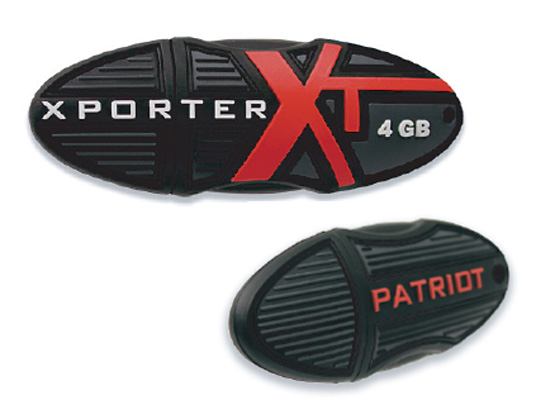
One of the other recent product releases from Patriot Memory was their excellent Xporter XT USB Flash drive that will soon be available in a version 2 offering read speeds up to 39MB per second. Current models are available in capacities up to 4GB.
G.Skill, GeIL, and Team Group
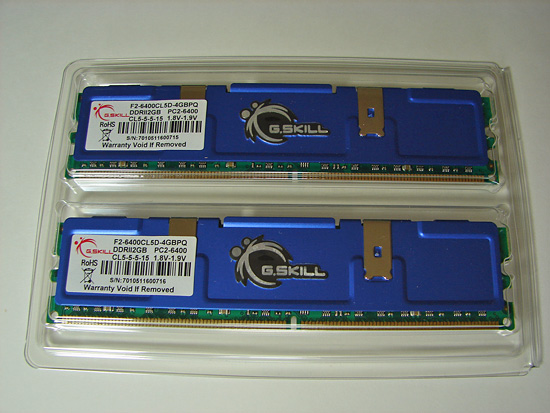
G.Skill is now shipping their F2-6400CL5D-4GBPQ kits that feature two matched DDR2-800 2GB modules with 5-5-5-15 timings at 1.8V~1.9V. We found with some additional voltage up to 2.1V that the memory would run at 5-4-4-12 at DDR2-800, and we can expect lower latency memories in Q2 and beyond in the 2GB modules. However, for most general users the current latencies are fine at DDR2-800, and dropping down to DDR2-667 will net 4-4-4-12 timings.
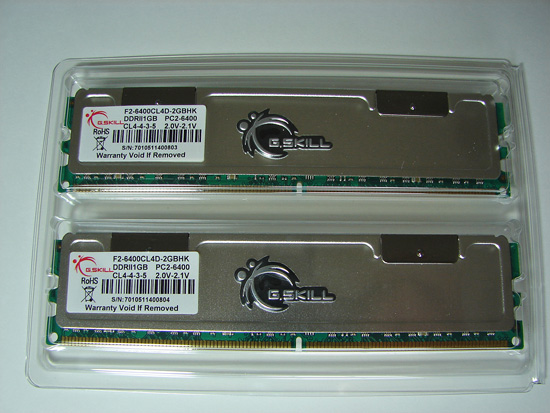
G.Skill is also introducing their new value DDR2-800 F2-6400CL4D-2GBHK 1GB modules featuring 4-4-3-5 timings at 2.0V. We have seen this memory reach DDR2-1000 at 4-4-3-5 timings at 2.20V on our ASUS P5B-E motherboard. We would not recommend running this memory above 2.20V and strongly advise adherence to the maximum 2.1V listed by G.Skill. At 2.1V we could reach 4-4-3-5 timings at DDR2-950 on the same board.
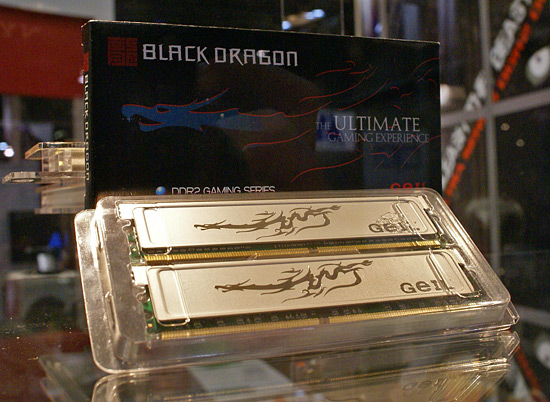
GeIL introduced their Black Dragon series of product that should be shipping this quarter. The initial product will feature low latency, low voltage, 3-3-3-6 DDR2-800 1G modules that will feature extensive overclocking headroom.
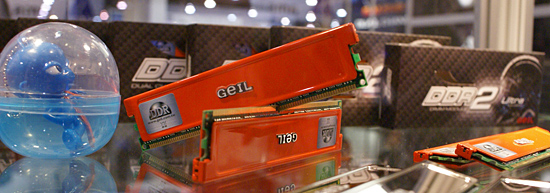
Their new Ultra Plus modules are running at DDR2-1100 with 4-4-4-12 timings at 2.4V and we can expect speeds up to DDR2-1200 at 5-5-5-15 settings.
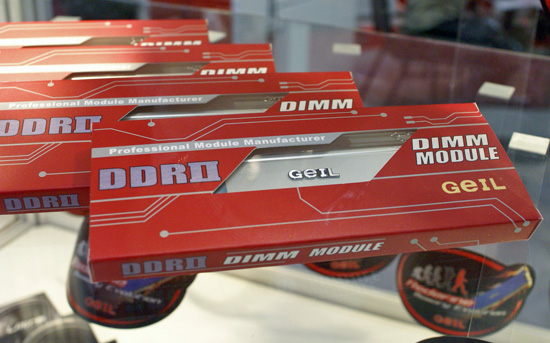
GeIL is also expanding their new value product lineup with 1GB, 2GB, and 4GB dual-channel kits. Their value DDR2-800 2GB kit features 5-5-5-15 timings at 1.8V, although with a voltage increase to 2.0V they will operate at 4-4-4-12 timings in current testing.
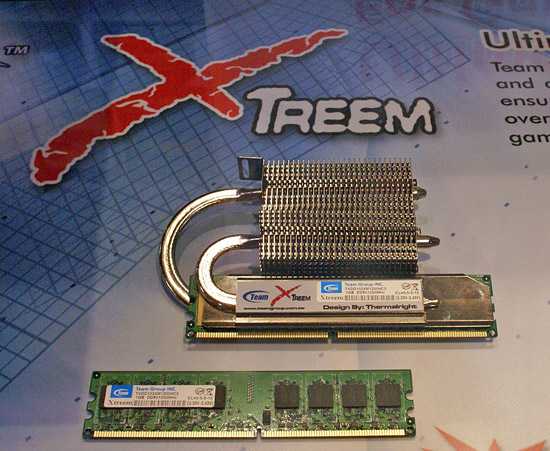
Team Group was showcasing a new cooling design by Thermalright for their upcoming high end modules featuring speeds above DDR2-1000. The somewhat large heatpipe/heatsink arrangement aims to provide improved memory cooling. It should also help to improve memory cooling by extending the cooling above board level into areas that are more likely to see significant airflow. The drawback of course is that the modules require quite a bit more clearance than your typical DIMMs, and many motherboard/HSF combinations will not work.
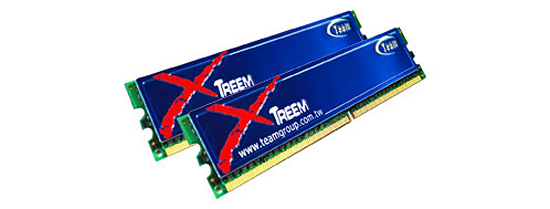
Team's Dark series was developed for entry level overclockers and gamers with the top end 1GB module featuring 4-4-4-12 timings at DDR2-800 speeds. These modules feature voltage ratings up to 2.35V on an eight layer PCB design that will easily run at 3-3-3-9 timing with 2.30V in our limited testing to date. Pricing is around $250 at this time for a 2GB kit.
Memory: ATP
ATP was founded in 1991 and has been a leading manufacturer of top quality memory products, including high-density memory modules and high-capacity flash digital media solutions.
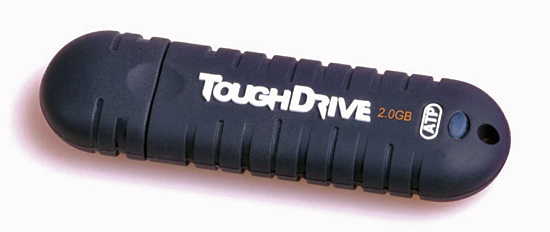
ATP's ToughDrive USB Flash drives range in capacities from 256MB to 4GB and come in a Synthetic Polymer Housing designed for shock absorption and water resistance. This product line features SLC based flash memory with read rates at 30MB/s and write rates at 20MB/s.
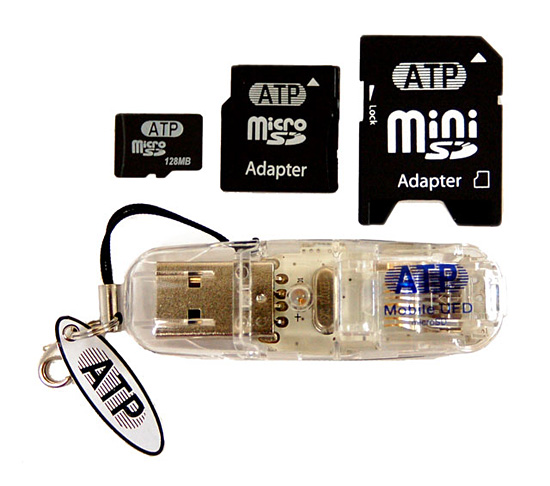
One of the most interesting flash storage products we viewed at CES is the SD Trio Professional Plus. This unique product utilizes an ATP high speed microSD card along with two different SD adapters and a USB reader to provide complete SD compatibility. The capacities range from 128MB to 1GB and are built with ATP's distinctive SIP (System-in-Package) manufacturing technology. This allows the cards to be fully waterproof and extreme temperature resistant.
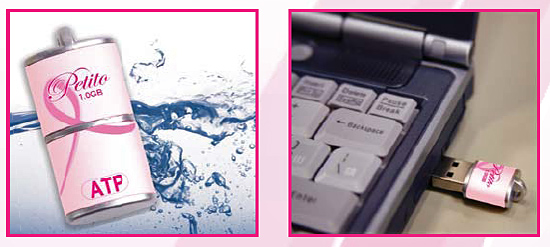
The Petito family of USB Flash Drives are some of the smallest on the market and feature a total length of 1.43 inches and weights around 8 grams. The drives come in 512MB and 1GB capacities while featuring read rates at 30MB/s and write rates at 20MB/s. The Pink Ribbon Special Edition is designed to commemorate the Susan G. Komen Breast Cancer Foundation's efforts in fighting to eradicate breast cancer as a life-threatening disease. ATP will donate 10% of the sales of this product to the Susan G. Komen Breast Cancer Foundation.
We will finish up our CES 2007 coverage with a look at products from Zalman, Thermaltake, Antec, CoolIT, NetGear, Creative, and Acer.







